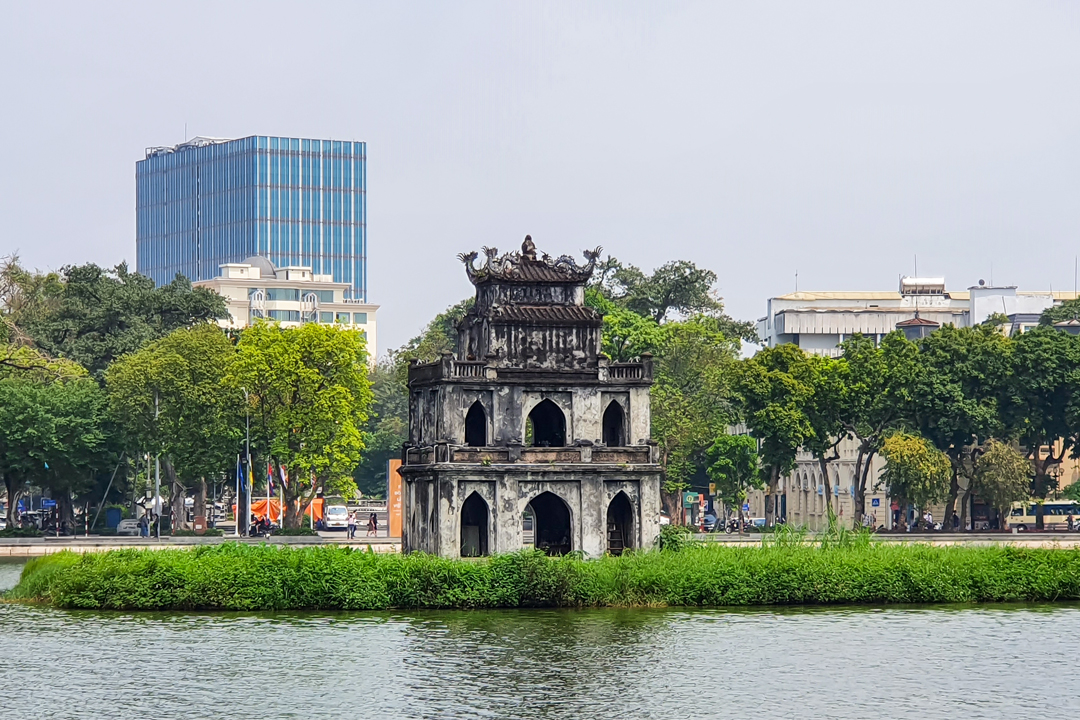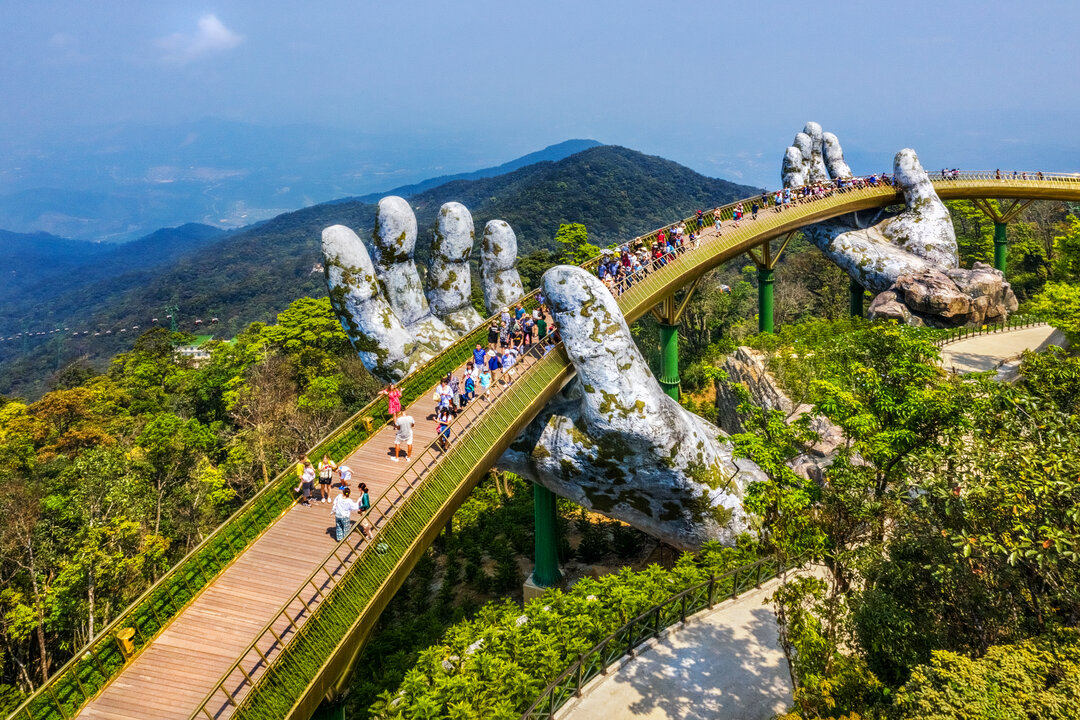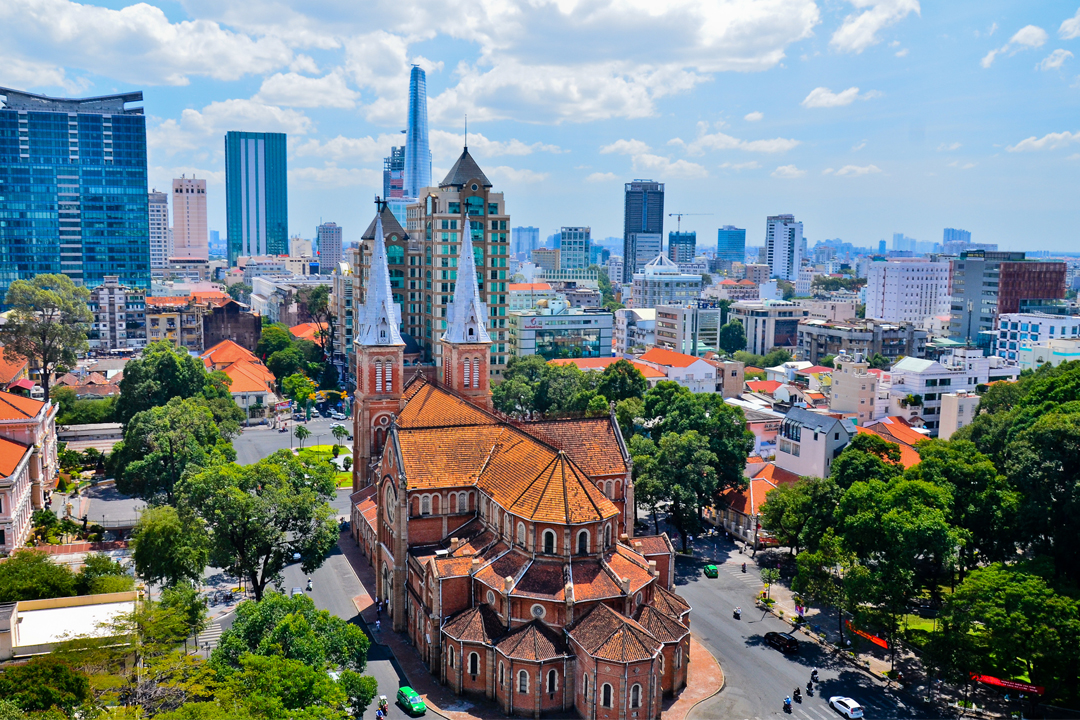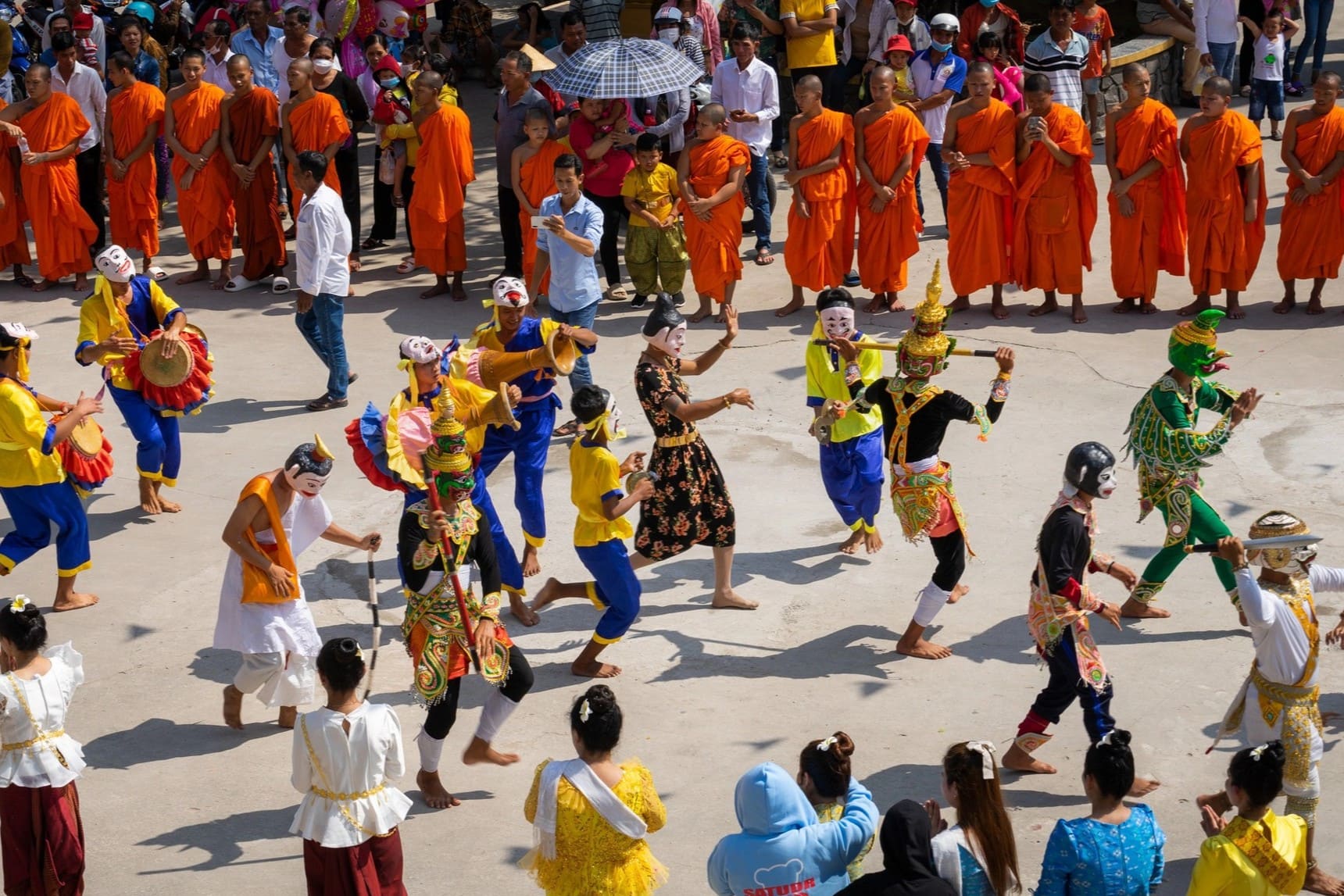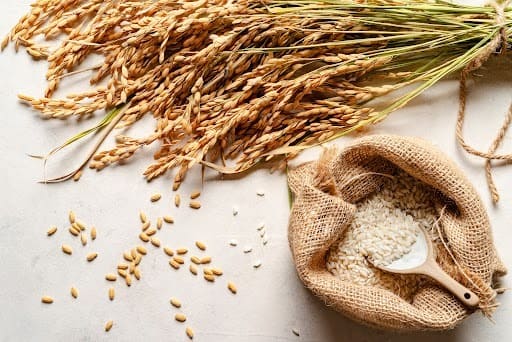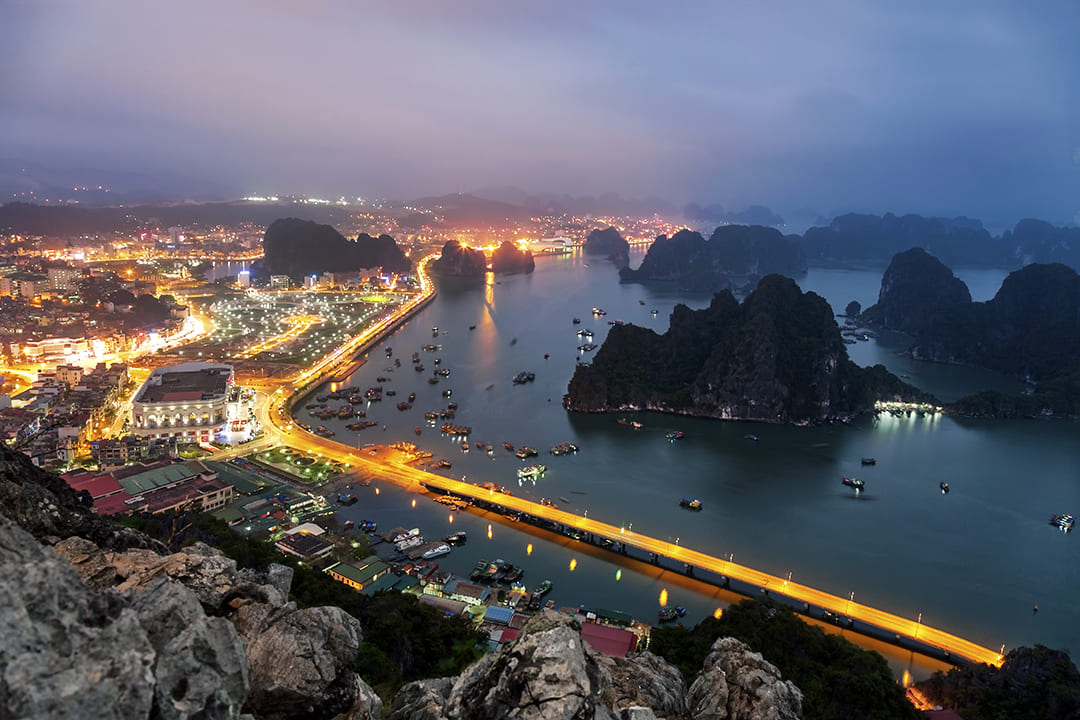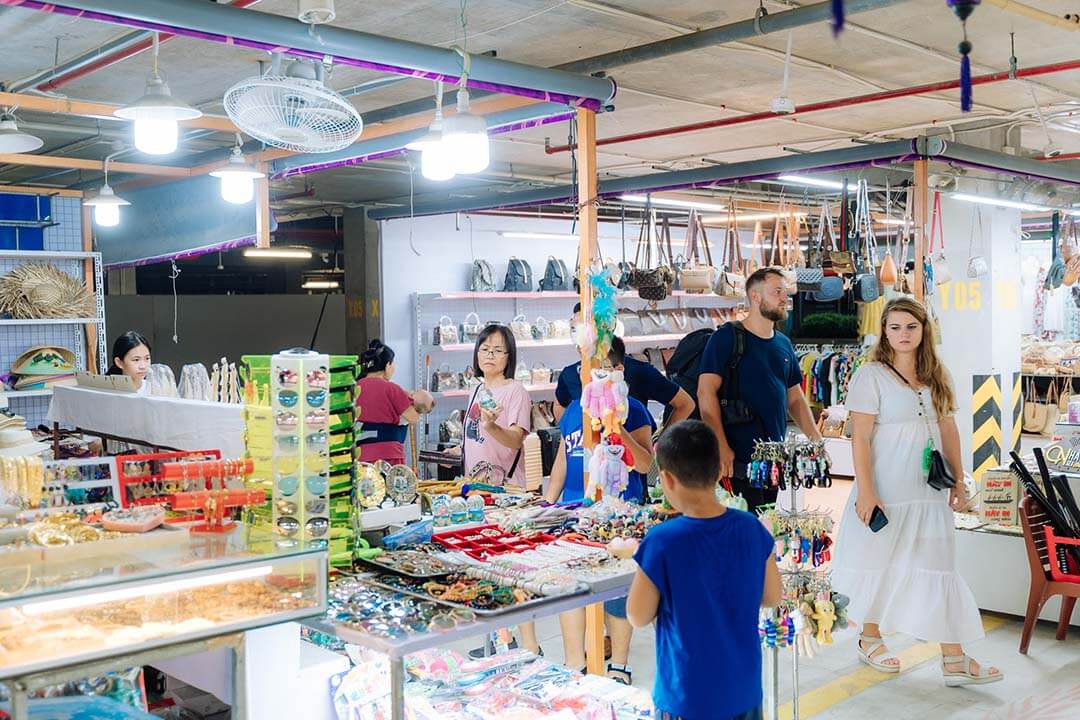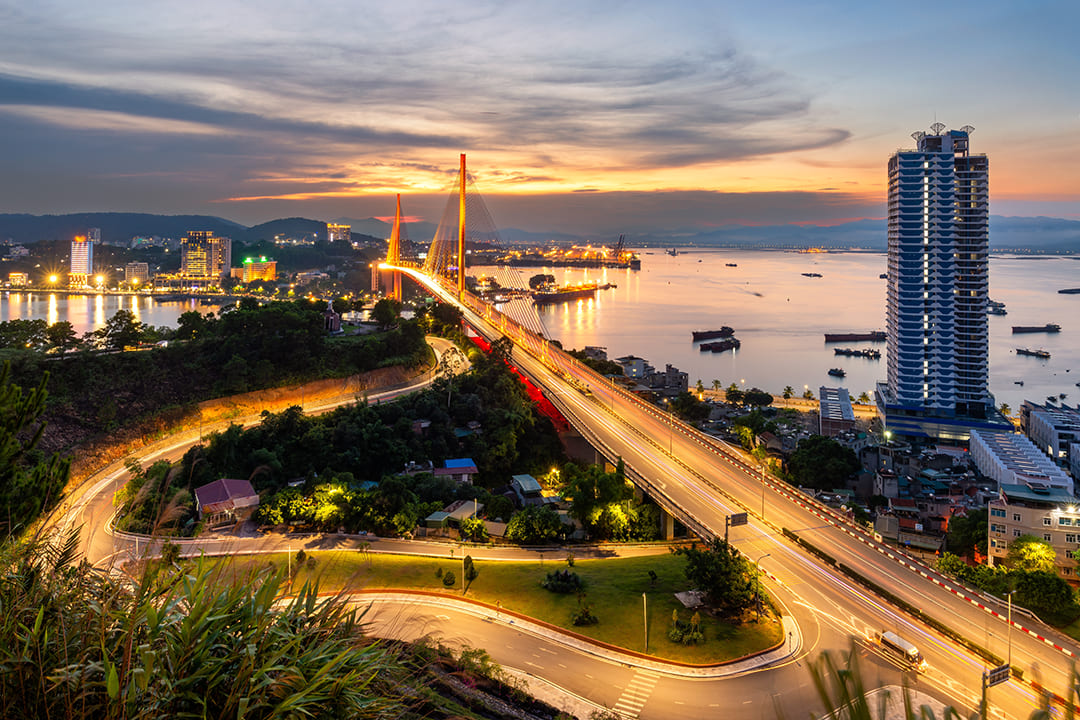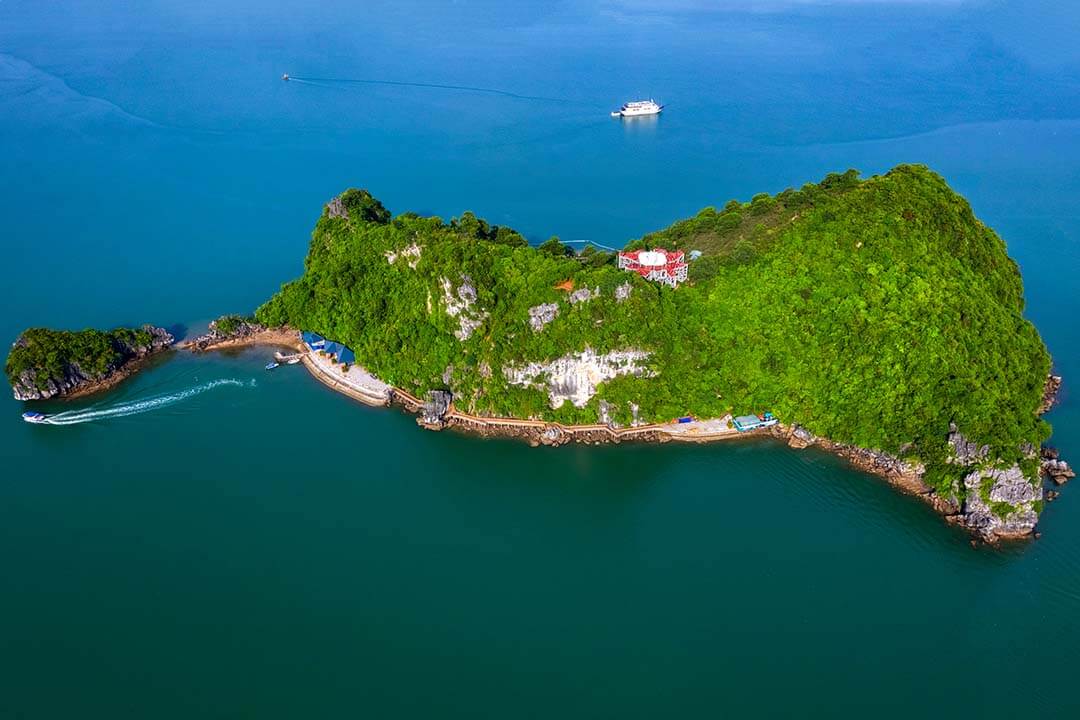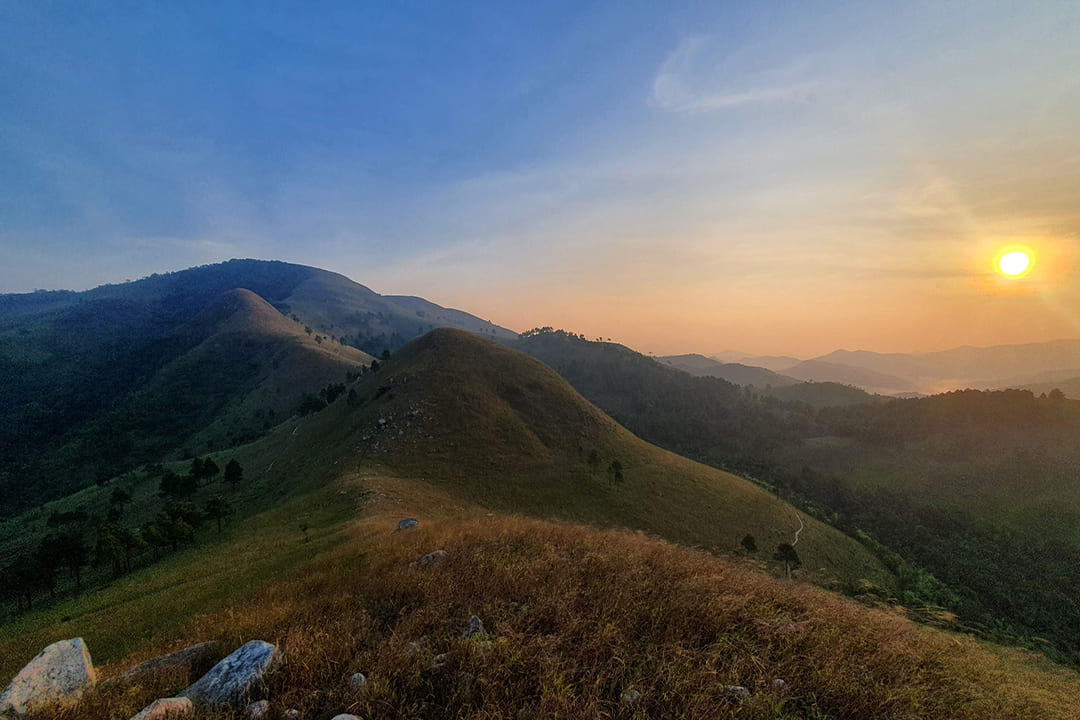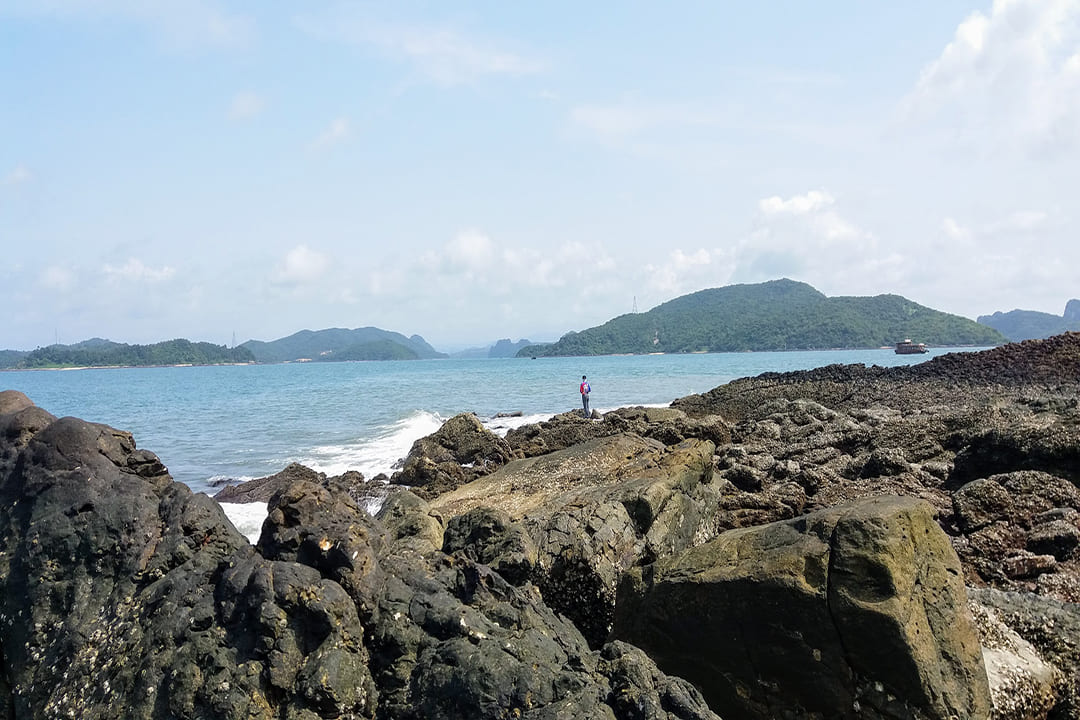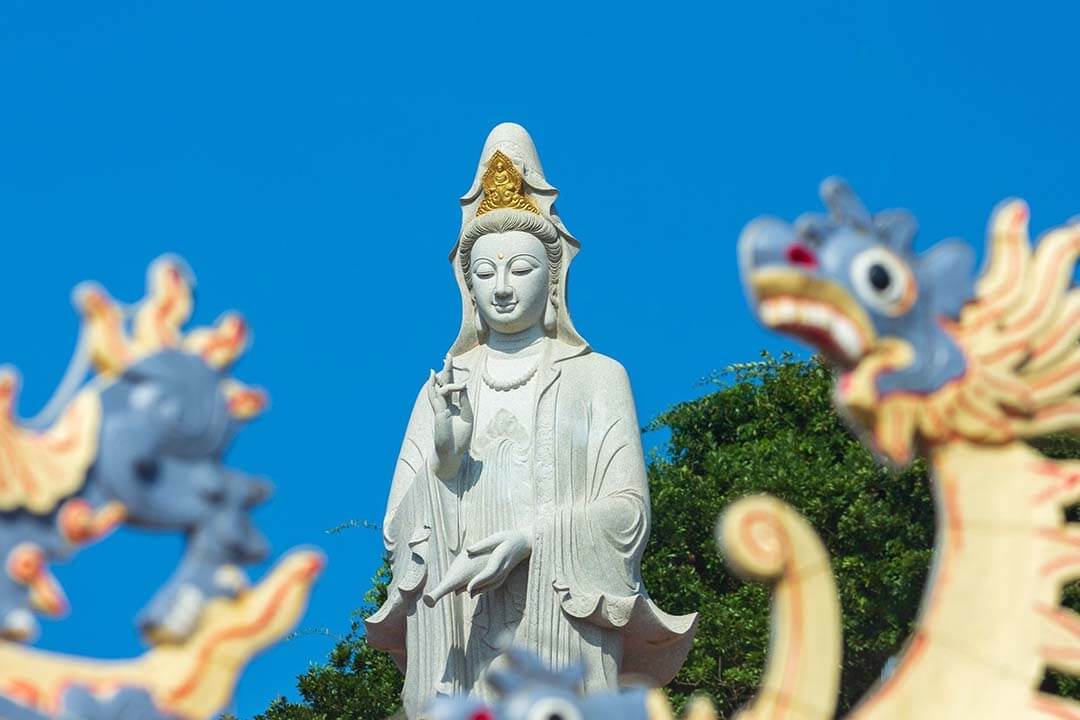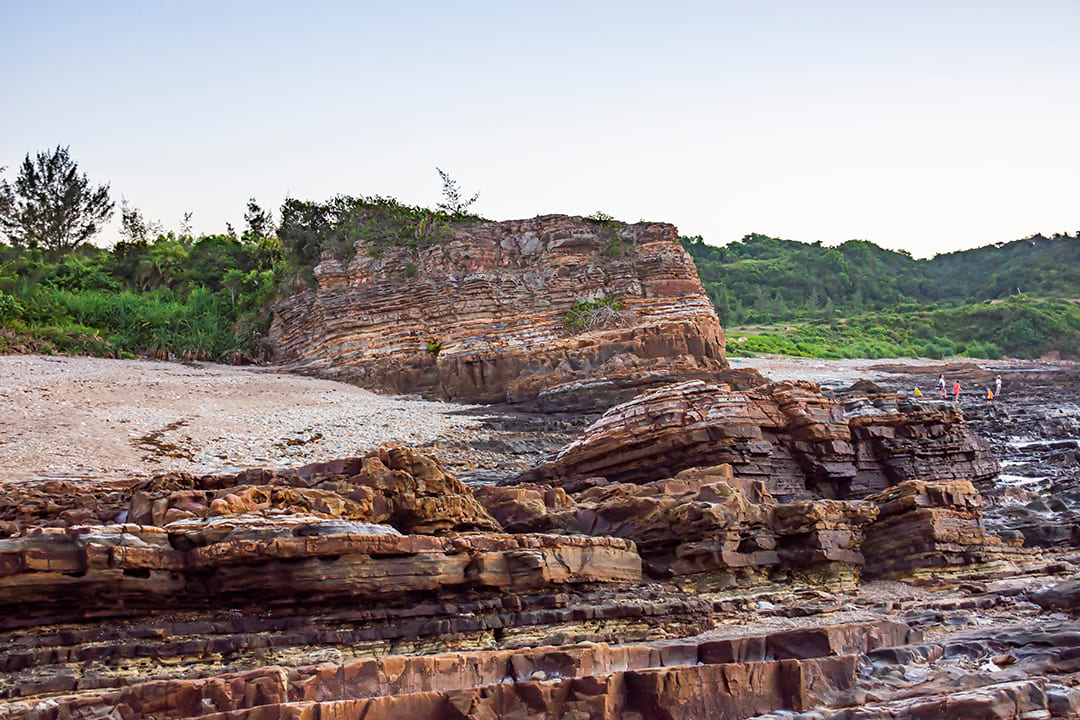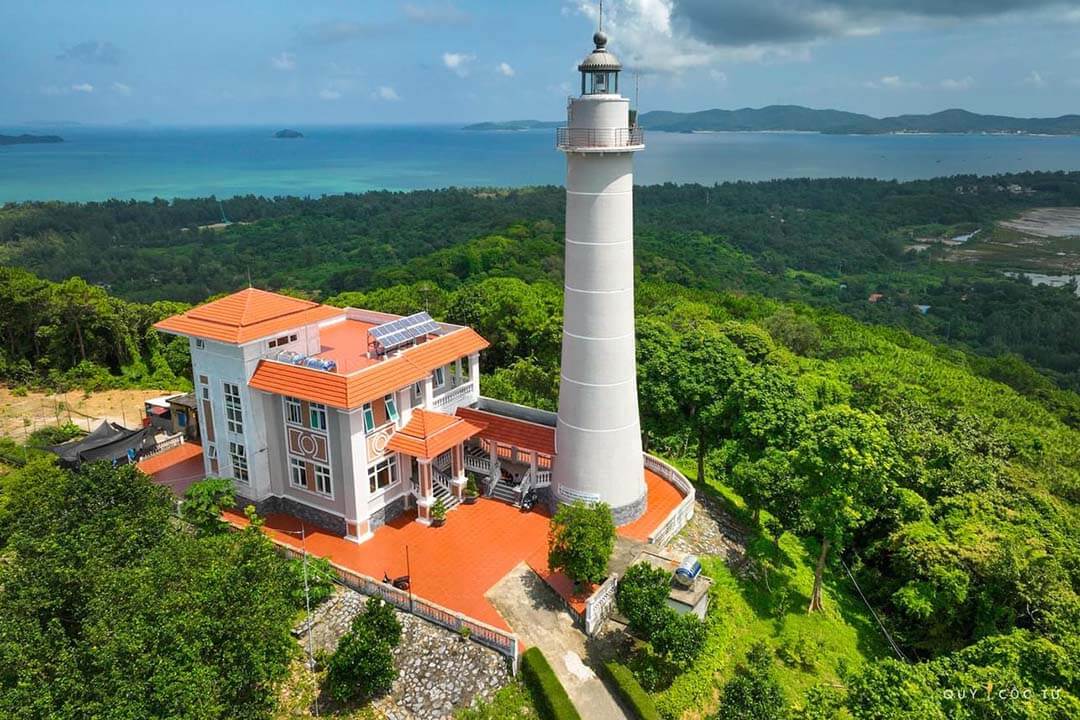Feb - 20 - 2025
Giai Oan Pagoda, nestled amidst the serene landscapes of Yen Tu Mountain, is a testament to ancient architectural brilliance, and also a beacon of spiritual significance. This article delves into the rich history and legends that envelop the pagoda, tracing its origins to the profound spiritual journey of King Tran Nhan Tong. Tourists will marvel at the architectural features, characterized by intricate carvings and harmonious designs that seamlessly blend with the natural surroundings.
Beyond its physical allure, Giai Oan Pagoda is a hub of spiritual activity. The article also highlights the vibrant religious festivals, such as the Yen Tu Spring Festival, which draw thousands of pilgrims and tourists. For those planning a visit, the article provides essential tips on dress code and etiquette, ensuring a respectful and fulfilling experience. The pagoda’s spiritual significance is further explored, offering insights into its role as a sanctuary for those seeking peace and enlightenment. Additionally, practical information on how to reach Giai Oan Pagoda is provided, including a scenic trek through Yen Tu Mountain that promises breathtaking views.
Finally, you will find recommendations on nearby attractions and accommodations, making it easier to plan a comprehensive visit. This guide of GTrip ensures a well-rounded experience, whether it’s exploring the nearby Dau Go Cave or relaxing at local accommodations. For those curious about logistical details, the FAQ section answers common questions about the best time to visit, entrance fees, and photography guidelines.
History and Legends of Giai Oan Pagoda
Giai Oan Pagoda holds a rich and captivating history intertwined with local legends. Believed to be deeply connected to the spiritual journey of King Tran Nhan Tong, this pagoda has long been a significant site for both spiritual seekers and historians. The origins of Giai Oan Pagoda trace back to the Tran Dynasty, where it was built to commemorate King Tran Nhan Tong's journey to enlightenment. The King, known for his wisdom and leadership, is said to have retreated to this very place for meditation after abdicating the throne to pursue a life of Buddhist monasticism.
The pagoda is not just a place of worship, it also carries profound legends of Giai Oan Pagoda, the most famous being that of the King’s transformation into a monk. According to local folklore, King Tran Nhan Tong found divine peace and spiritual solace through meditation at Giai Oan Pagoda after ascending Yen Tu Mountain. As he did so, his spirit is said to have connected with the profound teachings of Buddhism, leaving behind a legacy of wisdom that continues to resonate with followers today.
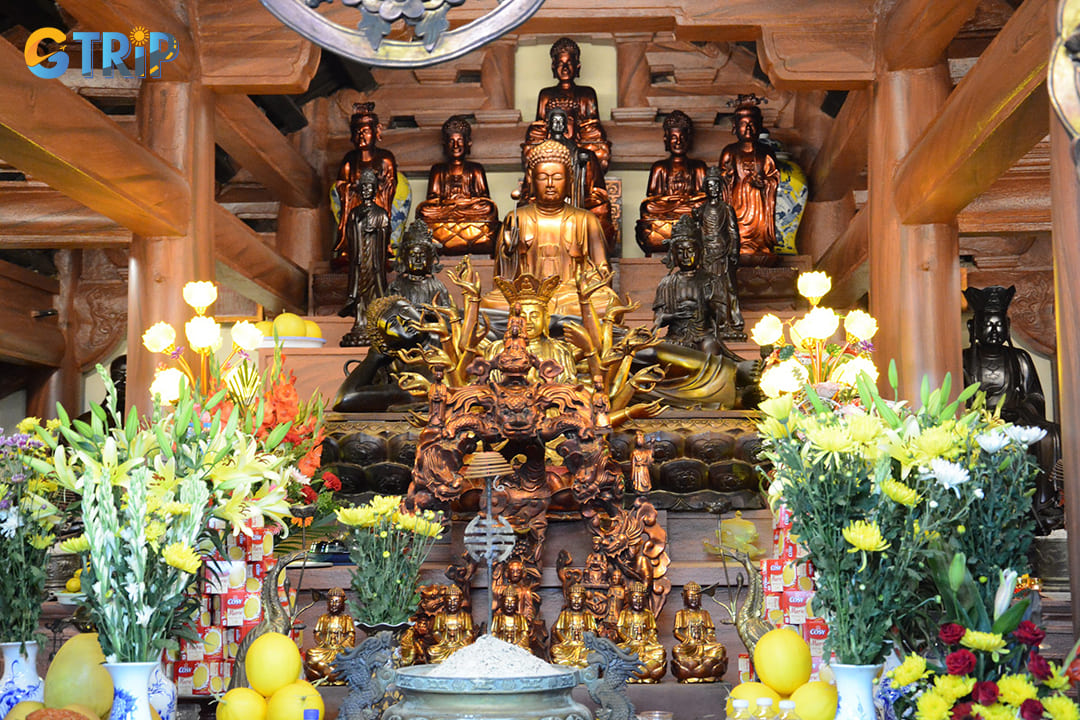
Giai Oan Pagoda is deeply connected to the spiritual journey of King Tran Nhan Tong
For those interested in exploring the surrounding area and the broader history of Quang Ninh, Yen Tu Mountain offers a deeper understanding of the region's spiritual and cultural significance. The ancient Cua Ong Temple, located nearby, complements the history of Giai Oan Pagoda with its own rich tales and spiritual offerings. As tourists journey through this sacred land, they are not only stepping through history but also connecting with the timeless spiritual teachings that transcend generations.
This deep historical significance sets the stage for a deeper understanding of the architectural features of Giai Oan Pagoda. The design elements of the pagoda reflect the profound spiritual connections that have defined the site for centuries. Let’s discover the architectural features of this pagoda in the next part.
Architectural features of Giai Oan Pagoda
Giai Oan Pagoda, originally built on the foundation of an old temple from the Tran Dynasty, is nestled against Ngoc Mountain, part of the Yen Tu Ancestral Mountains. In front of the pagoda flows Giai Oan Stream, linked to the historical tale of King Tran Nhan Tong. He was the one who set up a group to save his maids and concubines from drowning in Ho Khe Stream. The pagoda has undergone several reconstructions over time.
In 1994, Nun Superior Chan Duc and both local and international Buddhist followers reconstructed the Main Hall on the site of the former Ancestor House. In 2003, the Mother Shrine was restored on the foundation of the old pagoda. It became the only place in Yen Tu to honor the mother of King Tran Nhan Tong, Empress Dowager Nguyen Thanh Thien Cam, the sister of General Tran Hung Dao. In 2010, the Ancestor House was newly constructed.
The architecture of Giai Oan Pagoda is designed in the shape of the Vietnamese letter "Dinh" (J). Its structural pillars and beams are crafted from reinforced concrete, while the roof is adorned with fish-tail tiles. The roof ridge is finished with smooth cement mortar, featuring a central plaque inscribed with the four Chinese characters: "Giai Oan Hon Tu" (Giai Oan Pagoda). At both ends of the roof, intricate dragon reliefs are elegantly curved with motifs of soft clouds. The pagoda's top edge resembles a dragon’s head arching upward, surrounded by cloud and water wave patterns. The walls are constructed from red bricks laid without mortar, and the courtyard is paved with 30 cm x 30 cm Bat Trang bricks, offering a traditional aesthetic.
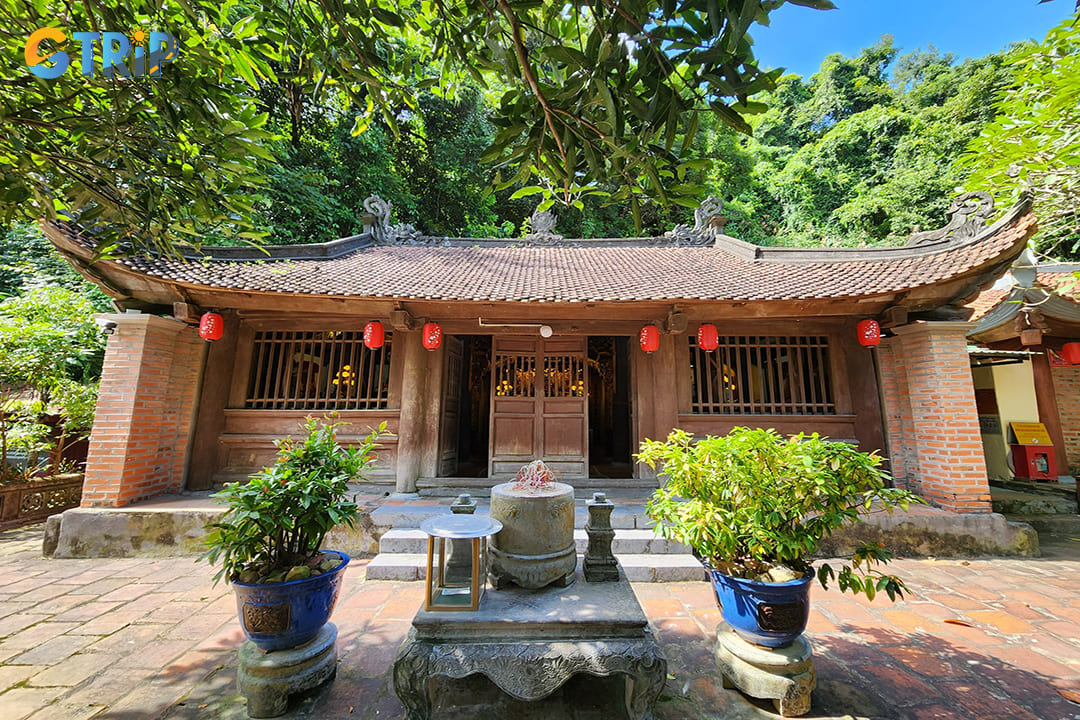
The architectural features of Giai Oan reflect the deep spiritual and cultural heritage
The wooden doors are made from ironwood, featuring a "Thuong song ha ban" structure, with upper bars and lower panels intricately carved with symbols. They are "Long, Ly, Quy, Phuong" (Dragon, Unicorn, Turtle, Phoenix) and "Tung, Cuc, Truc, Mai" (Pine, Chrysanthemum, Bamboo, Plum). The four corners are adorned with "Phuc Thu" motifs, depicting bats that symbolize good fortune.
In front of the pagoda stands an incense tower, measuring 3.2 meters in height, 1.8 meters in length, and 0.8 meters in width. Designed with two curved roofs, the incense tower is decorated with ancient-style patterns, adding to the sacred atmosphere of the site. The pagoda complex is divided into the Main Hall, the Mother Shrine (Dien Mau), and the Ancestor House (Nha To), each serving a distinct religious purpose.
Main Hall
The statues in the Main Hall are arranged according to the traditional worship style of northern Vietnamese Buddhist temples. The top tier houses the Three Eternal Buddhas (Tam The Phat). Below them are the Amitabha Triad (Di Da Tam Ton), the Medicine Buddha Triad (Duoc Su Tam Ton), the Three Saints of Flower Garland (Hoa Nghiem Tam Thanh), Avalokiteshvara Bodhisattva (Quan Am Chuan De), and Buddha entering Nirvana with the Nine Dragons Altar (Duc Phat Nhap Niet-ban va Toa Cuu Long).
In the inner sanctum, Ksitigarbha Bodhisattva (Dia Tang Vuong Bo Tat) is enshrined on the right, while Maitreya Buddha (Phat Di Lac) is on the left. The Front Hall features altars for the Holy Patron (Duc Ong) and the Sage Patron (Duc Thanh Hien), with statues of Dharma Protectors on either side: Encouraging Virtue (Khuyen Thien) and Suppressing Evil (Trung Ac).
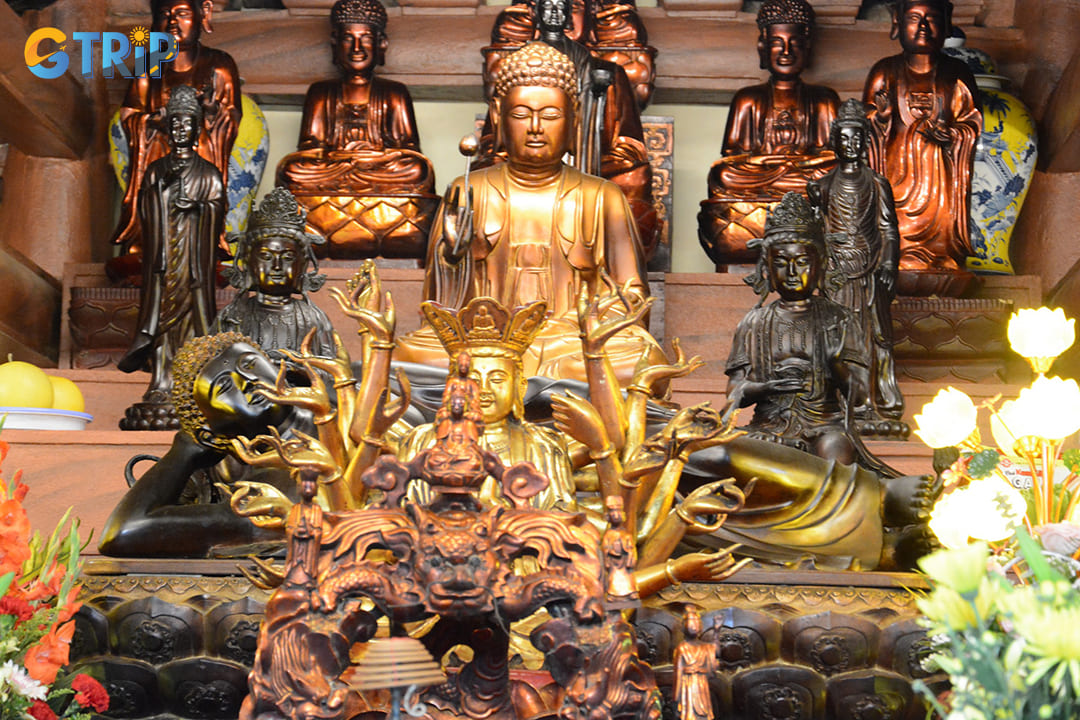
The statues in the Main Hall are arranged according to the traditional worship style of northern Vietnamese Buddhist temples
Mother Shrine (Dien Mau)
This shrine is the only place in the Yen Tu Relic Complex that honors Empress Dowager Nguyen Thanh Thien Cam, the mother of King Tran Nhan Tong. The main chamber enshrines the Empress Dowager, while in front of the shrine is an altar for the Three Kings (Tam Vuong). On the right side, there is an altar for Hung Dao Dai Vuong (General Tran Hung Dao), and on the left, altars for the Three Mother Goddesses (Tam Toa Thanh Mau) and a communal altar (Ban Tho Cong Dong).
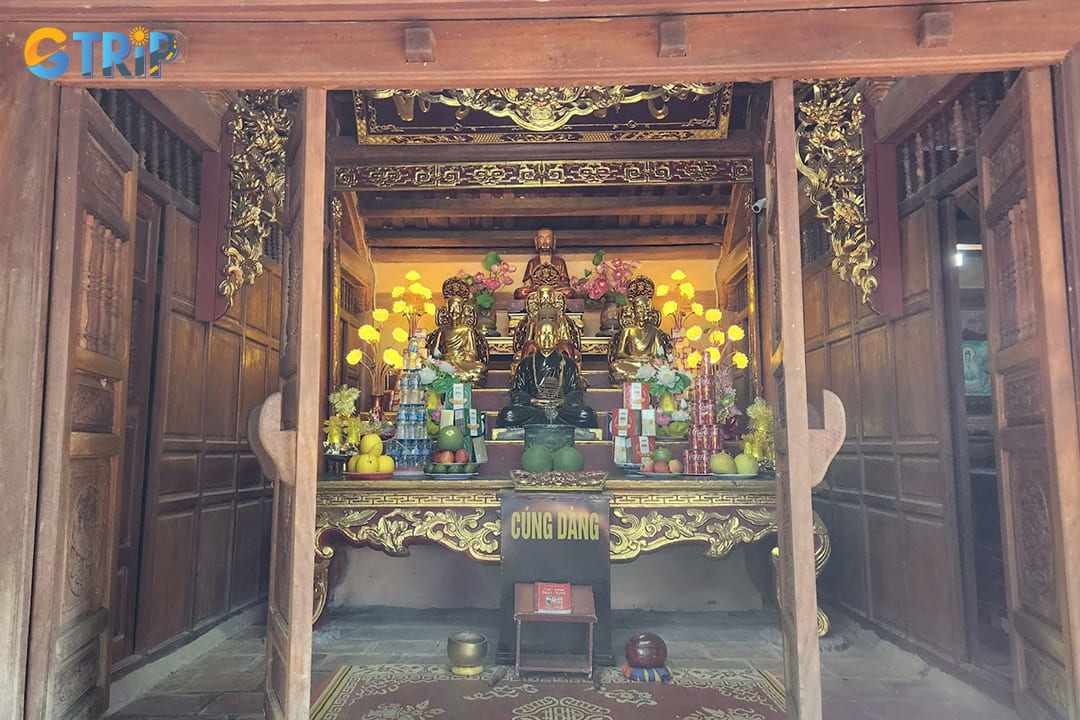
Mother Shrine is the only place in the Yen Tu Relic Complex that honors Empress Dowager Nguyen Thanh Thien Cam
Ancestor House (Nha To)
The Ancestor House serves as a place of homage for Bodhidharma (Bo-de Dat-ma), the Three Founders of the Truc Lam Zen Sect (Tam To Truc Lam), and the spiritual ancestors of Giai Oan Pagoda. Together, these structures contribute to the spiritual significance of Giai Oan Pagoda, highlighting its rich history, unique architectural features, and deep religious heritage.
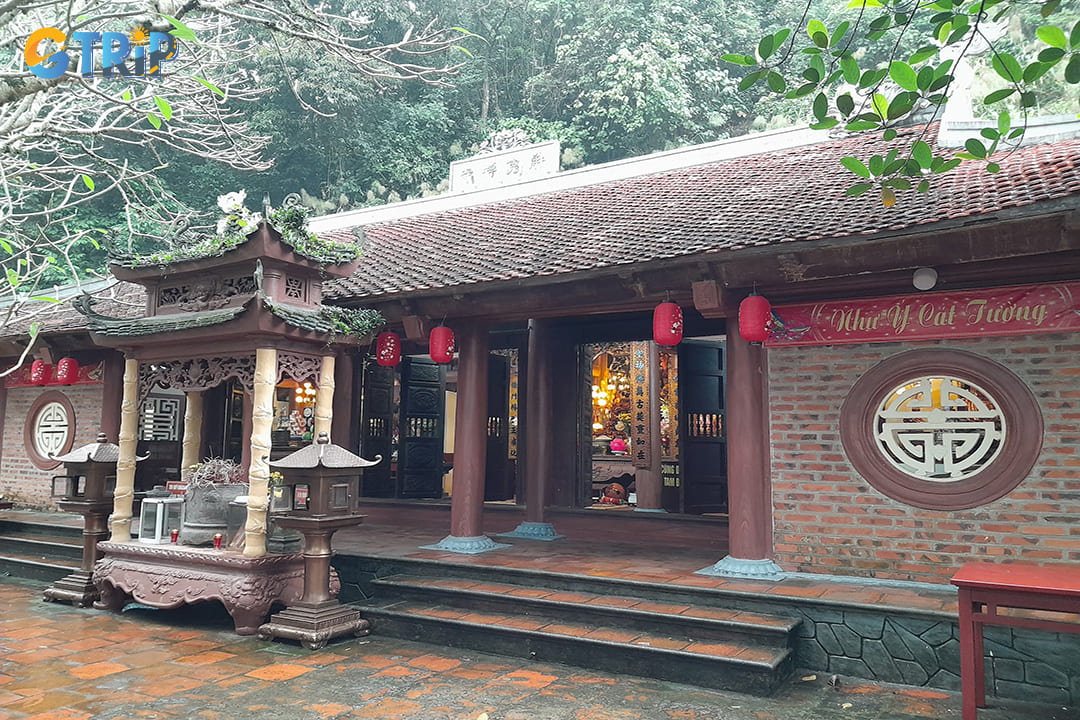
These structures contribute to the spiritual significance of Giai Oan Pagoda
Not far from Giai Oan Pagoda, other attractions like the Yen Tu Mountain are also known for their cultural and architectural significance. The design of these sites complements the pagoda, offering a holistic experience for people to understand the role of nature in Buddhist teachings. The nearby Ha Long Bay and its breathtaking landscapes also share a spiritual connection with the environment, providing a serene backdrop for contemplation. The pagoda’s design seamlessly blends with the surrounding natural beauty, such as Ti Top Island, enhancing the spiritual journey of those who visit. As tourists continue to explore, they will learn about the various rituals and ceremonies at Giai Oan Pagoda, offering a deepened understanding of its role as a spiritual center.
In terms of accessibility, the pagoda is not only a place of worship but also a significant architectural landmark that attracts both tourists and pilgrims. You can appreciate the artistry of Giai Oan Pagoda architecture while also participating in the vibrant religious activities that take place here. To fully understand the significance of this place, one should experience the architecture and design that embody centuries of Buddhist tradition.
Activities and rituals at Giai Oan Pagoda
At Giai Oan Pagoda, travelers can immerse themselves in a variety of traditional ceremonies at Giai Oan that provide a deeper connection to the spiritual atmosphere of the site. One of the most significant practices is meditation, where pilgrims seek inner peace while surrounded by the serene beauty of Yen Tu Mountain. Meditation sessions are often conducted in the quiet courtyards of the pagoda, offering a tranquil setting to focus on Buddhist teachings and personal reflection.
Additionally, offering incense is a central part of the rituals at Giai Oan Pagoda, symbolizing respect and devotion to the Buddha. Devotees light incense sticks, making a wish or prayer for their loved ones, while others engage in chants that evoke a sense of unity and devotion. These offerings are often seen as a way to honor the sacredness of the pagoda and to bring peace to the surrounding areas.
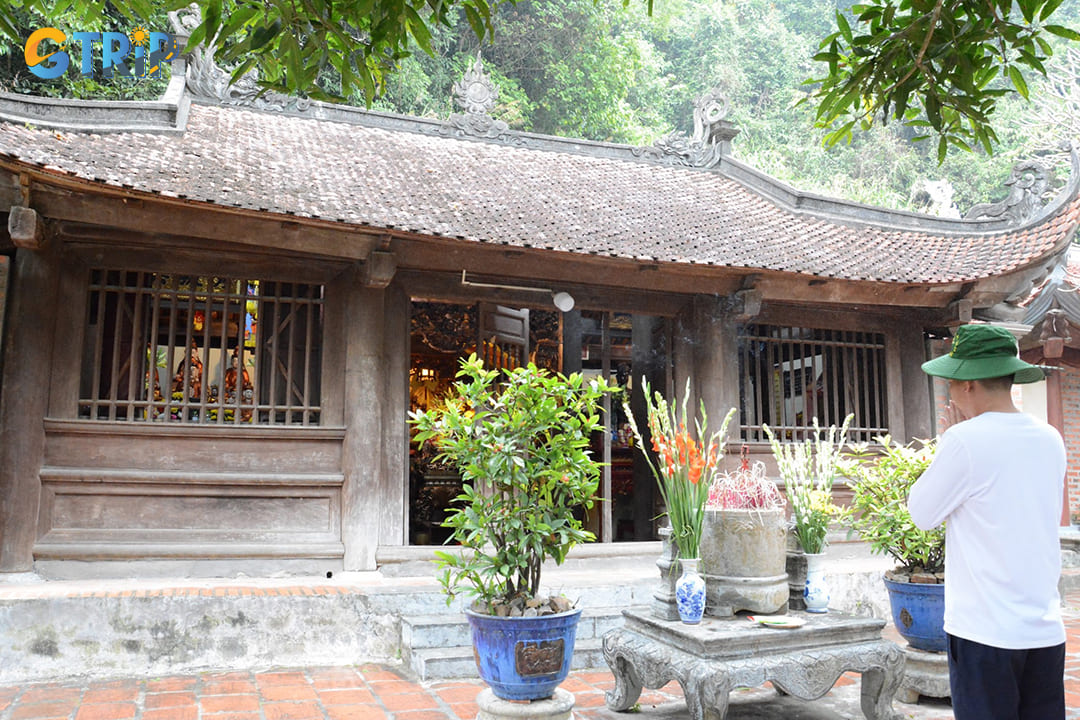
A tourist is praying at the pagoda
The pagoda also hosts several traditional Buddhist rituals. The acts of kneeling before the statues of Buddha or the revered King Tran Nhan Tong, who is closely associated with the pagoda's history, are common. These rituals are performed not only to worship but also to seek spiritual enlightenment and healing. You can participate by bowing, offering prayers, or meditating silently in these sacred spaces.
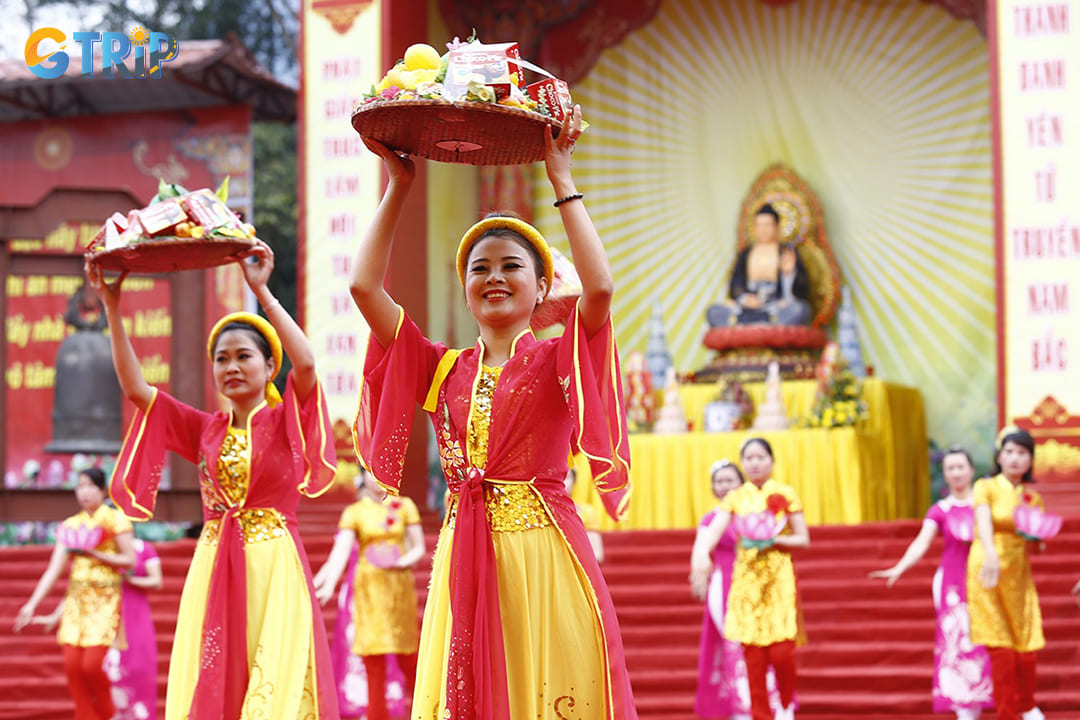
Yen Tu Spring Festival is an important festival for tourists to experience culture
In the quieter moments, the temple grounds invite people to reflect on Buddhist teachings, with many opting to sit and meditate in a peaceful environment. Tourist seeking a meaningful experience should take time to explore these spiritual practices as part of their journey to Giai Oan Pagoda. As you engage with the sacred rituals of the pagoda, it's also worth considering how the spiritual journey to Giai Oan can deepen your understanding of Buddhist philosophy. The following section will provide more insights into the rich spiritual significance of Giai Oan Pagoda, revealing why it continues to be a prominent destination for pilgrims.
Religious festivals at Giai Oan Pagoda
The religious festivals at Giai Oan Pagoda are an integral part of the cultural and spiritual fabric of the region. One of the most significant events is the Yen Tu Spring Festival, which attracts thousands of pilgrims and tourists each year. Held annually at Yen Tu Mountain, this festival is not only a religious gathering but also a vibrant celebration of the local traditions and heritage.
During the Yen Tu Spring Festival, you can experience traditional rituals, prayers, and offerings, which are part of the spiritual journey taken by many Buddhists. The festival marks the start of the new year and is a time for reflection and renewal of faith. Pilgrims from across Vietnam come to pay respects to the revered King Tran Nhan Tong, who is said to have ascended to the mountain to meditate and seek enlightenment.
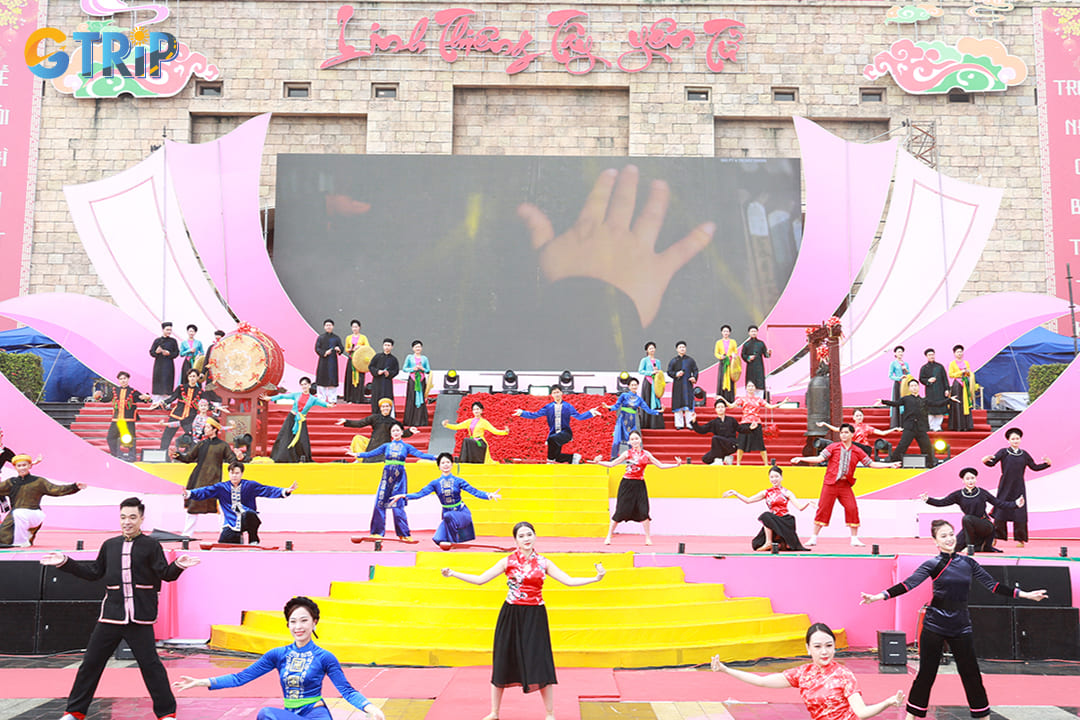
Yen Tu Spring Festival attracts thousands of pilgrims and tourists each year
Apart from the Yen Tu Spring Festival, Giai Oan Pagoda festivals often feature a variety of cultural events, including traditional dances, music, and local crafts. These festivals are more than just religious observances, they also serve to preserve and promote the cultural identity of the Quang Ninh region. Tourists who attend these festivals will find an atmosphere of devotion and cultural immersion, as both locals and tourists engage in the rituals and celebrations.
The connection between the cultural events at Giai Oan and the serene landscape of Yen Tu Mountain makes these festivals a unique experience. The peaceful environment, coupled with the rich cultural practices, provides an unforgettable opportunity for those seeking both spiritual and cultural enrichment. For those visiting the region, the Yen Tu Mountain itself offers additional exploration opportunities, such as the tranquil trails and breathtaking views. After the festival, you can also explore the nearby Quang Ninh Museum to learn more about the province's rich history and traditions.
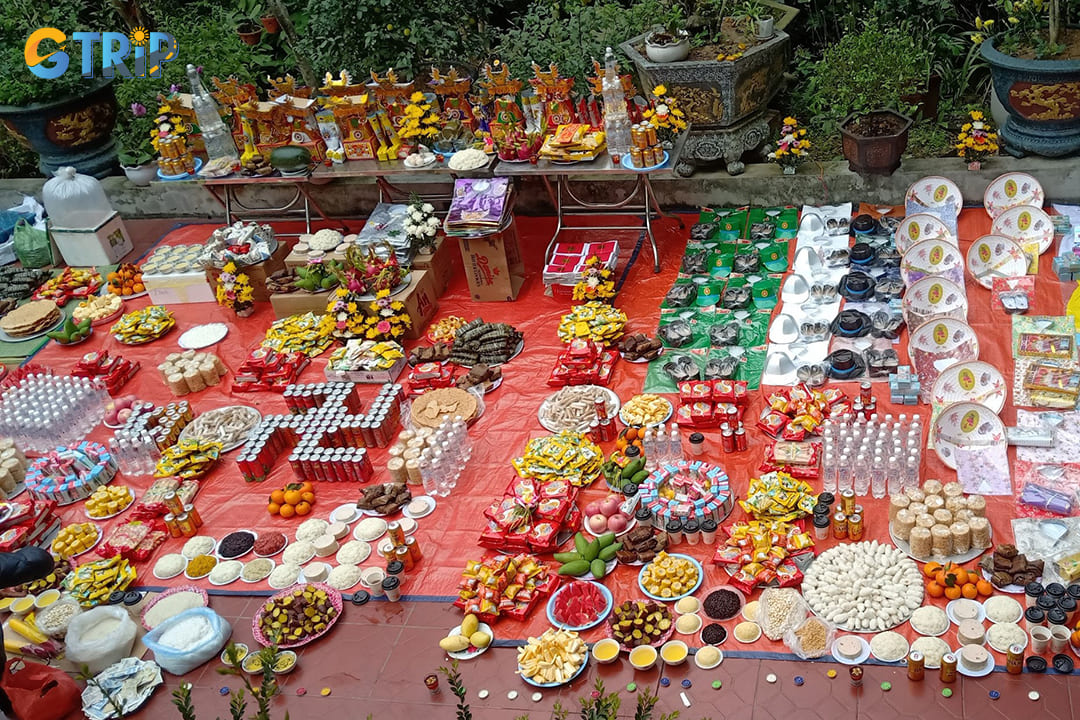
The festivals serve to preserve and promote the cultural identity of the Quang Ninh region
These festivals are also a great way to connect with other travelers, share experiences, and deepen one's understanding of Buddhism and local customs. For those interested in nature and spirituality, Giai Oan Pagoda offers a compelling blend of both, especially during these vibrant celebrations. Following the spiritual immersion of the Yen Tu Spring Festival, tourists may choose to delve further into the sacredness of the region. They explore other sacred sites, like the nearby Ba Vang Pagoda, another revered temple in Quang Ninh, or continue their journey to Yen Tu Mountain for more exploration.
Dress code and visiting tips for Giai Oan Pagoda
When planning a visit to Giai Oan Pagoda, it’s important to respect the sacred nature of the site by adhering to certain etiquette, including dressing appropriately. The dress code for Giai Oan Pagoda encourages people to wear modest clothing. Both men and women should avoid wearing shorts, tank tops, or revealing clothes when entering the pagoda. Long pants or skirts and shirts with sleeves are recommended, as they reflect the respectful nature of the visit.
In addition to the dress code for Giai Oan Pagoda, tourists should also keep in mind the customs of the pagoda. It is customary to remove your shoes before entering any sacred areas, such as the main hall. This practice is common in many Vietnamese temples and pagodas and signifies respect for the spiritual space. You can find shoe racks near the entrance to store their footwear securely while exploring the site. It is a good idea to bring a pair of comfortable socks for walking around the pagoda grounds.
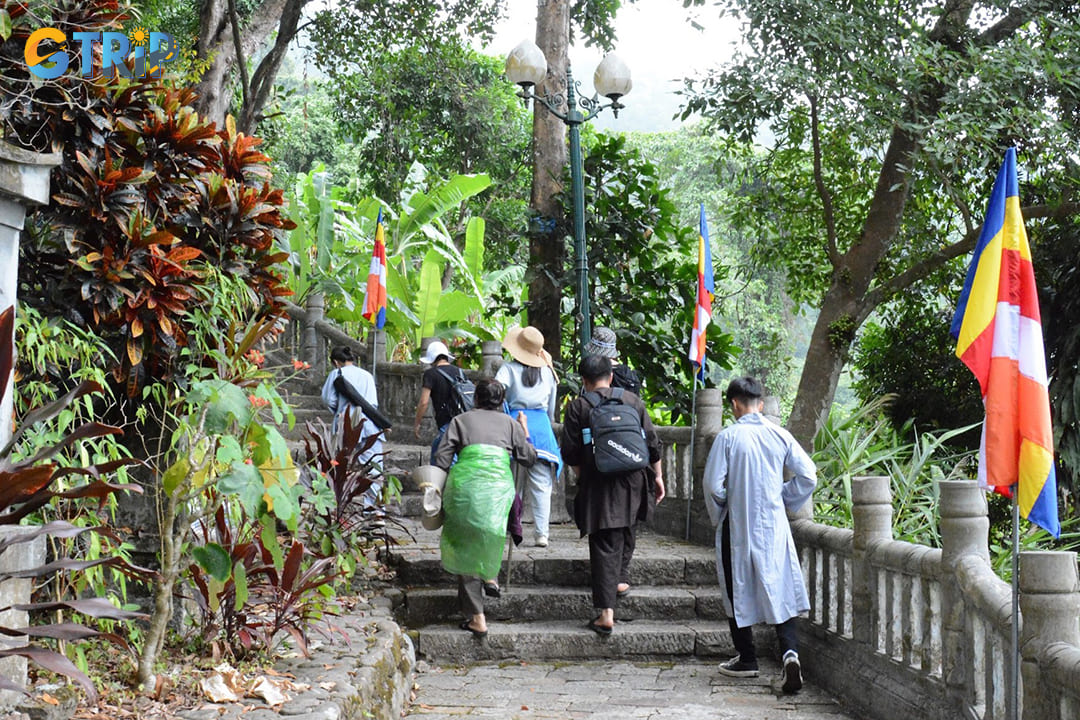
It’s important to respect the sacred nature of the site by adhering to certain etiquette
For those visiting during peak seasons, such as the Yen Tu Spring Festival, it’s advisable to arrive early to avoid crowds. If you plan to visit Giai Oan Pagoda as part of a larger pilgrimage, following the travel tips for Giai Oan Pagoda can help ensure a smooth and peaceful experience. Carrying a water bottle, a hat, and sunscreen is recommended, especially if you are hiking up Yen Tu Mountain to reach the pagoda. Comfortable shoes are essential for the trek, as the mountain path can be steep and rugged.
If you’re looking to explore other spiritual sites in the region, consider a visit to the nearby Yen Tu Mountain, where you can enjoy a serene environment and explore more temples along the way. The area offers a spiritual experience that complements your visit to Giai Oan Pagoda.
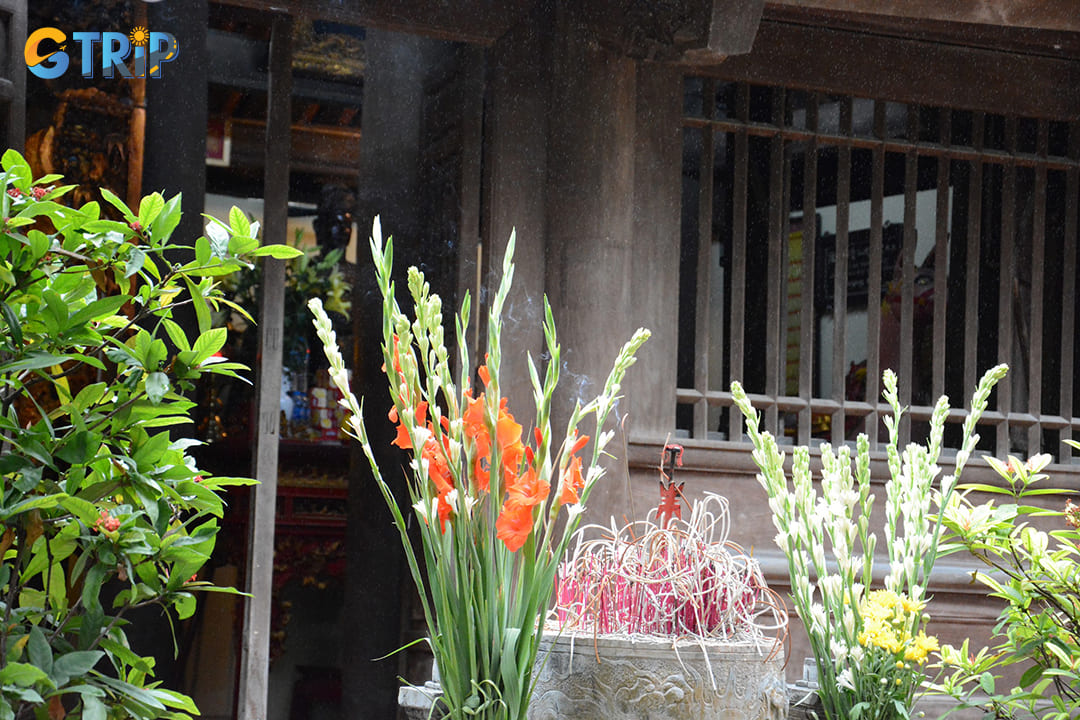
Follow the travel tips for Giai Oan Pagoda to have a smooth and peaceful experience
By adhering to the dress code and following helpful visiting tips for Giai Oan Pagoda, you will be able to show respect for the site’s spiritual significance while enjoying a meaningful visit. After you’ve experienced the tranquil atmosphere, you might want to explore more cultural landmarks such as the Cua Ong Temple nearby, where you can learn more about the region’s rich spiritual history.
The spiritual significance of Giai Oan Pagoda
Giai Oan Pagoda holds immense spiritual significance, attracting pilgrims and spiritual seekers from all over Vietnam. Nestled in the serene surroundings of Yen Tu Mountain, this pagoda is deeply connected to the spiritual journey to Giai Oan, where many come to meditate, pray, and reflect. The Buddhist teachings at Giai Oan Pagoda emphasize peace, compassion, and enlightenment, making it an essential stop for those on a quest for spiritual clarity.
The pagoda is known for its tranquil ambiance, providing the perfect environment for contemplation and spiritual rituals. You can take part in meditation sessions, engage in prayer, and offer incense, all of which contribute to a deeper connection with their inner selves. The atmosphere at Giai Oan encourages an individual’s search for enlightenment, aligning perfectly with the broader spiritual practices found in sacred sites in Quang Ninh. For those interested in learning more about the significance of this region, nearby sites such as the Cua Ong Temple and Ba Vang Pagoda also offer spiritual insights into the local Buddhist practices.
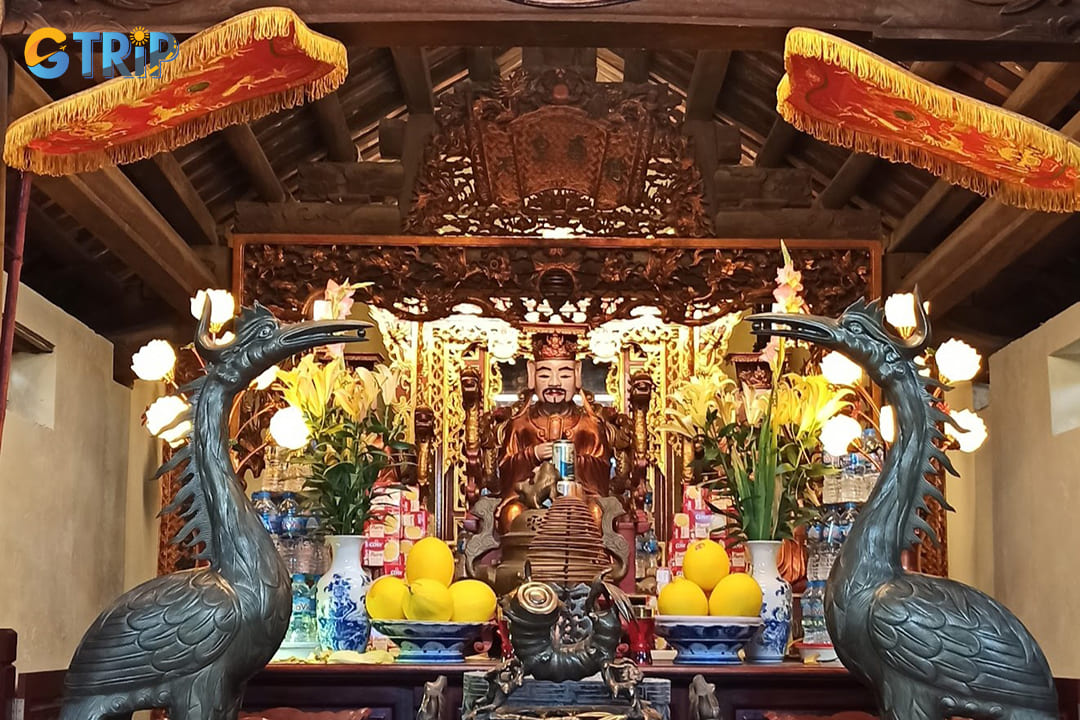
Giai Oan Pagoda holds immense spiritual significance
How to reach Giai Oan Pagoda?
To visit Giai Oan Pagoda, travelers typically embark on a spiritual journey through Yen Tu Mountain, where the pagoda is located. The Yen Tu pilgrimage itinerary offers a peaceful and scenic trek through lush forests and rocky paths. It allows pilgrims to immerse themselves in both nature and spirituality as they approach the sacred site. The journey is well-marked and is designed to provide both a physical and mental challenge, adding to the pilgrimage's significance.
From the base of Yen Tu Mountain, you can either choose to walk or take a cable car to the summit, where Giai Oan Pagoda is situated. The walk-up is not only an opportunity to enjoy stunning views of the surrounding landscape but also to connect with the serene atmosphere of the mountain. For those seeking a more relaxing journey, the cable car offers a panoramic view of Yen Tu Mountain, making it a preferred option for many.
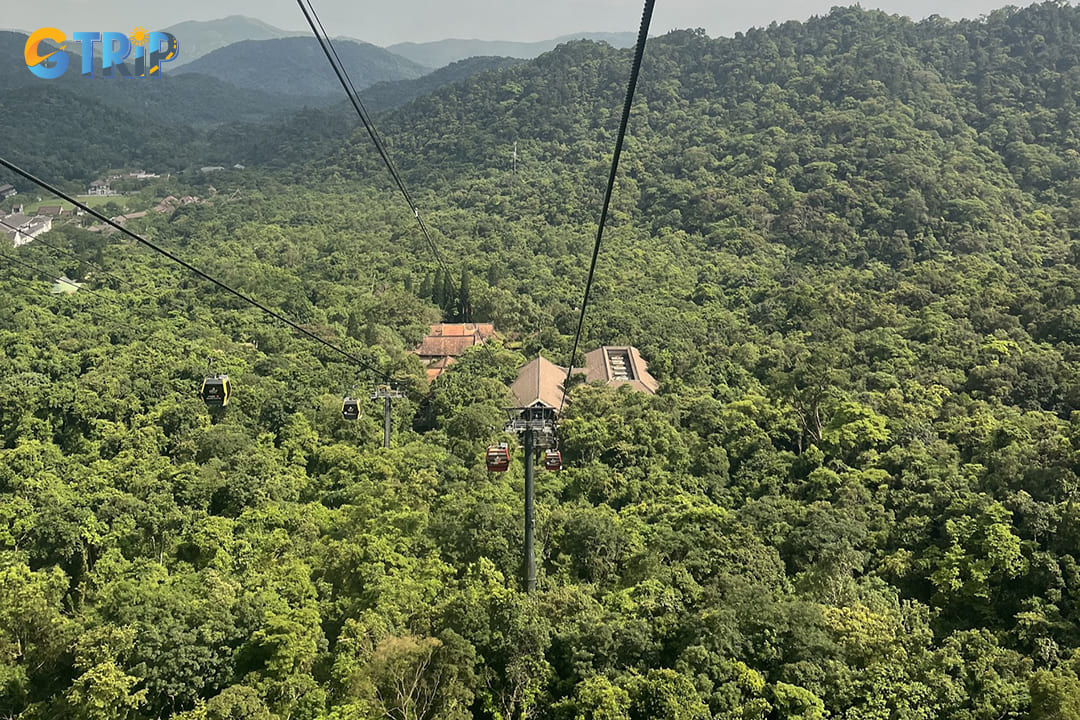
You can try going by cable car to reach Yen Tu Mountain and the pagoda
If you're planning to trek, ensure that you’re prepared for a moderate hike, which can take several hours. Along the way, you'll encounter smaller shrines and natural features that contribute to the spiritual ambiance. The path to the pagoda is particularly beautiful during the spring months when flowers bloom and the air is crisp. The trek culminates at Giai Oan Pagoda, where you can reflect on the beauty of the surroundings and the significance of the temple.
For those interested in more details about the mountain and the journey, consider exploring other nearby sites like Yen Tu Mountain, which offers further spiritual insights and stunning views of the area. Once at Giai Oan Pagoda, you can enjoy not just the architecture but the sense of tranquility that comes with being at such a revered destination.
To enrich your trip further, it’s recommended to visit other nearby spiritual sites like Poem Mountain, which is not far from Yen Tu and offers its own unique experience. After your pilgrimage, consider unwinding at nearby accommodations that cater to pilgrims and tourists alike, making the most of your spiritual exploration. With the Giai Oan Pagoda as your destination, your visit doesn’t end here. After your pilgrimage, explore nearby attractions to continue your journey of discovery.
Nearby attractions and accommodations
Tourists to Giai Oan Pagoda can easily explore several nearby attractions that offer a deeper cultural and natural experience. One of the most notable sites is Yen Tu Mountain, which is not only home to the pagoda but also a place rich in Buddhist history and serene landscapes. Hiking through Yen Tu Mountain offers a spiritual journey for many pilgrims, and the majestic views of the surrounding area make the trek even more memorable. For those interested in further exploring, the Yen Tu Mountain area features several Buddhist temples and pagodas that are integral to understanding the region's spiritual significance.
Explore more knowledge about hiking in Quang Ninh to enhance your experience before joining this activity in Yen Tu Mountain.
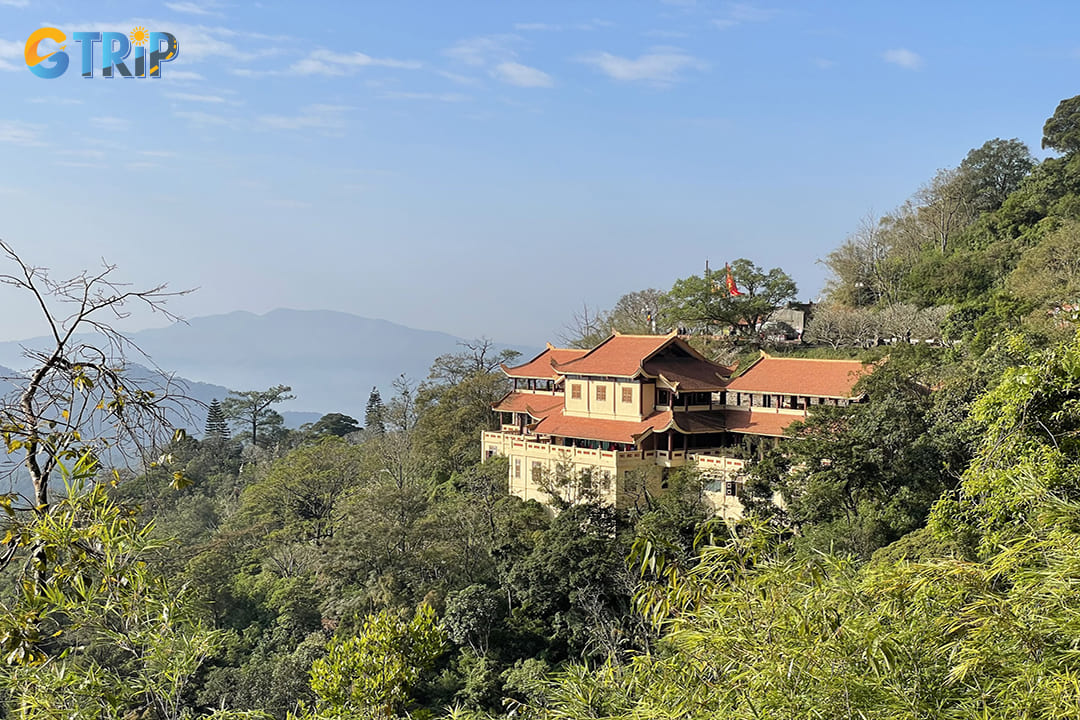
Yen Tu Mountain is home to the pagoda and also a place rich in Buddhist history and serene landscapes
In addition to Yen Tu Mountain, there are several nearby spots that offer a diverse range of experiences. For those interested in nature, Bai Tu Long Bay is a short trip away, known for its stunning limestone islands and clear waters. It’s a fantastic location for a day trip, where you can enjoy activities like kayaking or simply relax on the beach. For an enriching historical experience, you can also explore the Quang Ninh Museum, which showcases the cultural heritage of the region, offering insights into its history, art, and traditions. If you prefer to stay active and continue your exploration, you can visit Sun World Ha Long, an entertainment complex that combines both cultural and modern attractions. It’s a great destination for families or those looking for a fun and engaging time outside of the pagoda visit.
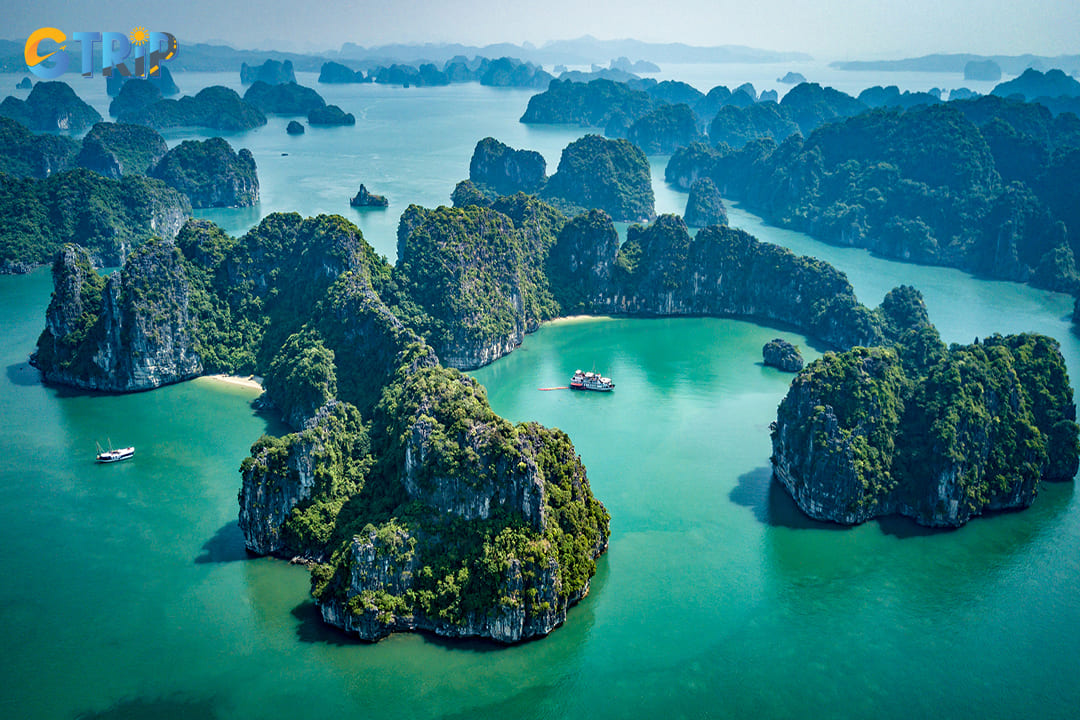
Bai Tu Long Bay is a short trip away from Giai Oan Pagoda
Accommodations near Giai Oan Pagoda are plentiful, ranging from comfortable hotels to more traditional guesthouses, ensuring a relaxing stay after a day of exploration. Many hotels in the area offer easy access to the pagoda, allowing you to enjoy the peaceful atmosphere of Yen Tu Mountain while remaining close to the main attractions. If you’re seeking a more immersive experience, staying at local lodgings near the mountain provides a chance to enjoy the tranquility and connect with the natural surroundings. For those planning to stay longer in the region, accommodations are varied. If you want a boutique hotel, guesthouse, or a more upscale resort, there are plenty of choices that make your stay comfortable and convenient. Some local guides even offer customized tours to help tourists make the most of their time in the area.
FAQ about Giai Oan Pagoda
What is the best time to visit Giai Oan Pagoda?
The best time to visit Giai Oan Pagoda is during the spring months, particularly from January to March. This is when the weather is cool and the Yen Tu region is celebrated for its vibrant Yen Tu Spring Festival. This period not only offers pleasant weather for trekking but also aligns with the festive atmosphere, making it a perfect time for you to experience the spiritual journey in its most vibrant form. If you are considering exploring other Quang Ninh attractions as part of your itinerary, the weather during this time is also ideal for outdoor activities.
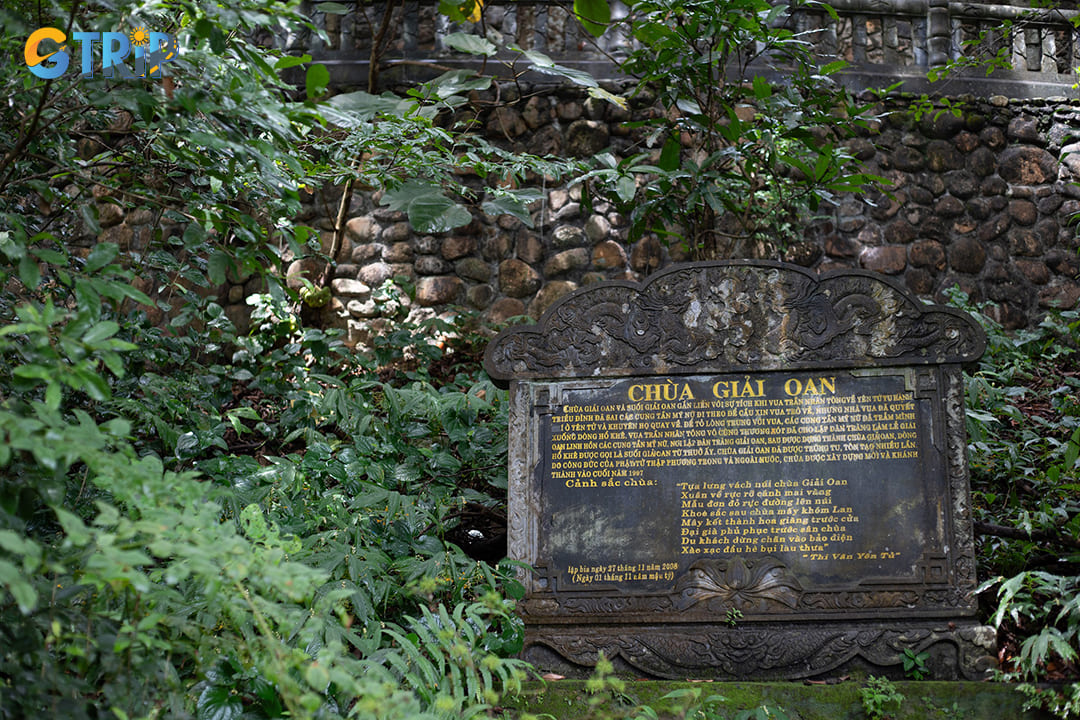
The best time to visit Giai Oan Pagoda is during the spring months
Are there any entrance fees for Giai Oan Pagoda?
Yes, there is an entrance fee to access Giai Oan Pagoda. The fee typically covers the cost of maintenance and the management of the surrounding sacred sites. You should check the Yen Tu Mountain or the official website for the most up-to-date pricing. It is worth noting that the fee is usually modest and contributes to preserving the pagoda's rich history and spiritual significance.
Can I take photos inside the pagoda?
Photography is generally allowed in Giai Oan Pagoda, but tourists are advised to be respectful and follow local guidelines. It’s important to be mindful of the Buddhist rituals that may be taking place, as these are sacred moments for the pilgrims. If you're interested in capturing the serene beauty of the surrounding area, you can take photos of the natural landscapes and architectural features. For photography spots, consider exploring the views from Yen Tu Mountain, where breathtaking panoramas await.
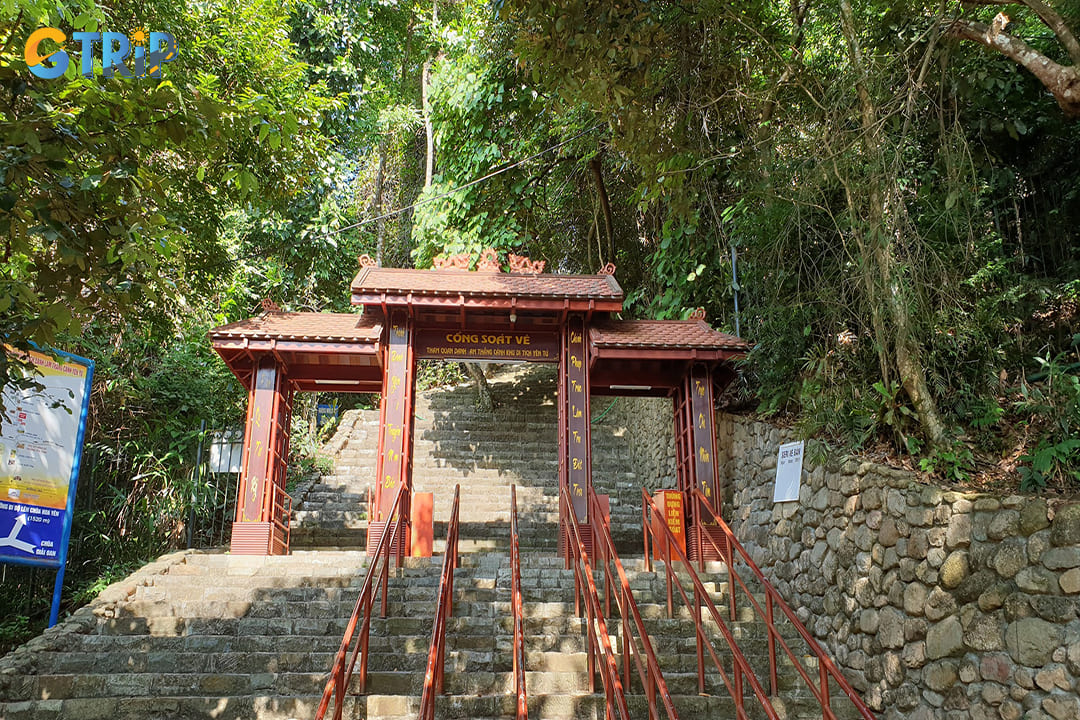
Photography is generally allowed in Giai Oan Pagoda
What are the nearby attractions to explore after visiting the pagoda?
After visiting Giai Oan Pagoda, there are several nearby attractions worth exploring. You could take a trip to Yen Tu Mountain, which offers a scenic trek with panoramic views of the region. For those interested in natural beauty and tranquility, Bai Tu Long Bay is another popular destination that provides a peaceful retreat with its stunning landscapes. You can also explore the Cua Ong Temple or venture further into the Quang Ninh beaches to experience the region's diverse natural offerings.
Is there any guided tour available for Giai Oan Pagoda?
Yes, there are guided tours available for Giai Oan Pagoda, which are highly recommended for those seeking a deeper understanding of its spiritual significance. Experienced guides can share insights into the history and legends of the pagoda, helping you appreciate its rich cultural heritage. If you're planning a guided tour, you may also want to explore Ha Long Bay or Bai Tu Long Bay, where several tour operators offer packages that include visits to both historical and natural landmarks. You can consider exploring the essence of Vietnam with GTrip - Vietnam Travel Agency, your trusted partner for unforgettable journeys.
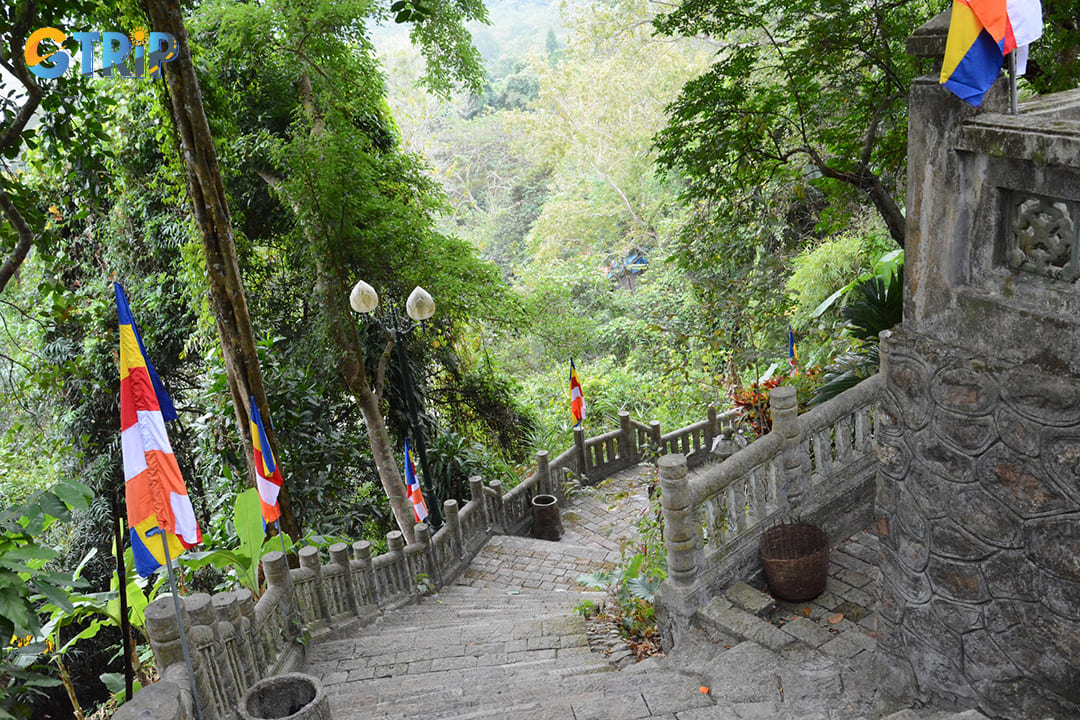
You can consider exploring the essence of Giai Oan Pagoda with GTrip
In conclusion, Giai Oan Pagoda offers a rich spiritual and cultural experience, blending its historical significance with stunning architectural features and meaningful religious rituals. Its serene environment and cultural festivals, like the Yen Tu Spring Festival, make it a must-see for any traveler interested in Vietnam's religious heritage. If you’re planning a trip, be sure to check out other remarkable locations nearby to complete your journey. And for those seeking a new adventure, don't miss out on Ha Long Bay tours, where you can explore the breathtaking natural beauty of the region.

